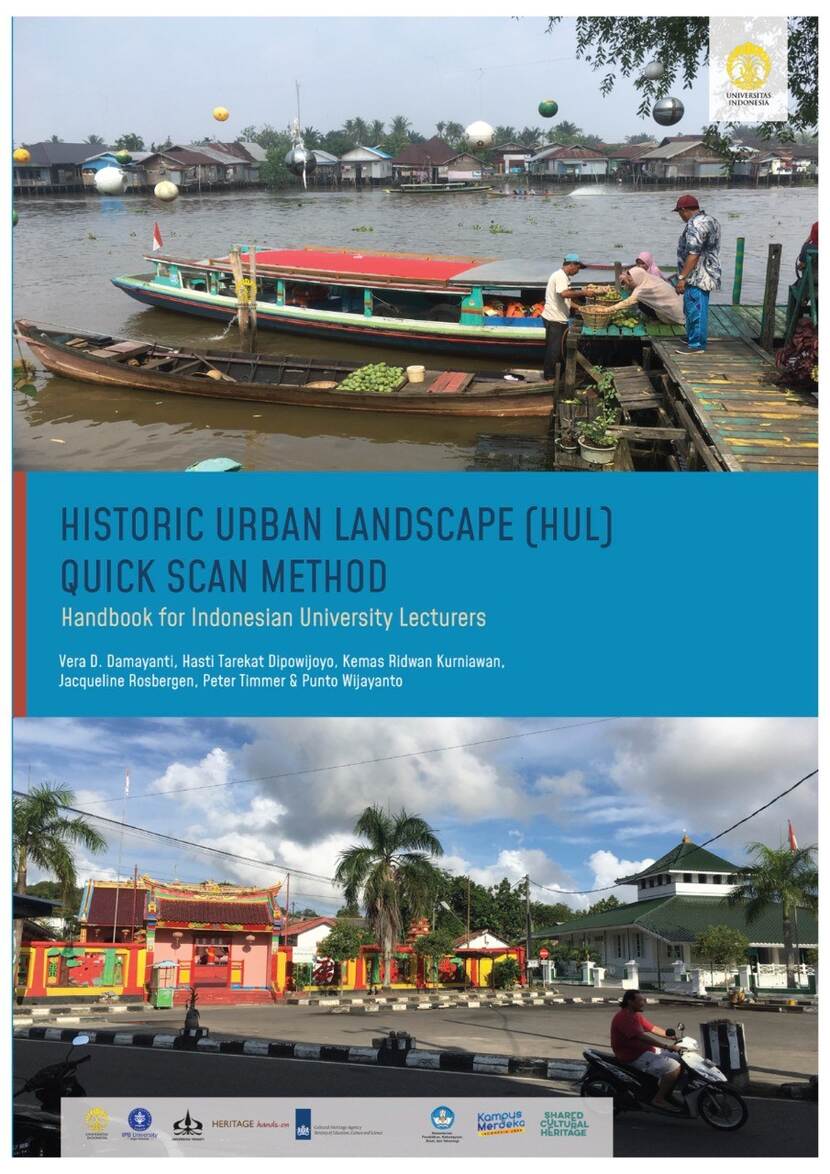Historic Urban Landscape (HUL) Quick Scan Method - Handbook for Indonesian University Lecturers
The HUL Quick Scan Method is a practical, participatory tool that embraces the principles of the Historic Urban Landscape (HUL) Recommendation adopted by UNESCO in 2011. The main focus of the method is to inspire people to become engaged to understand historic urban areas and formulate proposals for their future development. Achieving adequate management and sustainable development of historic urban sites in such a way that cultural heritage is beneficial to local societies at various levels is central in this context.
The HUL Quick Scan Method was tested twice; the Indonesian cities of Muntok (Bangka) and Banjarmasin (Kalimantan) served as experimental gardens. This handbook is a next step and is intended for Indonesian university teachers who would like to contribute added value to their existing modules on heritage conservation. Following this handbook and organising HUL Quick Scan workshops with local stakeholders and the local community offers participating students an opportunity to actively develop knowledge of cultural heritage and sustainable developments as well as obtain practical experience in the field. In return, these workshops can play a significant part in the dissemination of the HUL approach in local societies.
This publication is available at the ISSUU website (free of charge)

Colofon
Published by the Department of Architecture, Faculty of Engineering, Universitas Indonesia
Kampus UI Depok 16424, Indonesia
In collaboration with:
Universitas Indonesia (UI), Jakarta
IPB University, Bogor
Universitas Trisakti, Jakarta
Heritage hands-on, Amsterdam
Cultural Heritage Agency of the Netherlands (RCE), Amersfoort
Authors: Vera D. Damayanti, Hasti Tarekat Dipowijoyo, Kemas Ridwan Kurniawan, Jacqueline Rosbergen, Peter Timmer,
Punto Wijayanto.